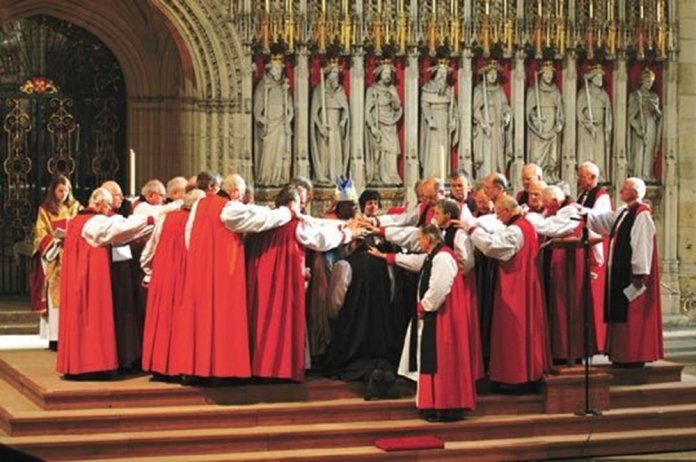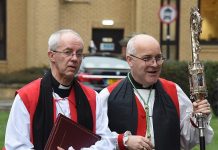Transparency builds trust. Secrecy breeds distrust. Currently, the Church of England’s House of Bishops faces a serious trust deficit in its relationship with the other two Houses of General Synod, the House of Clergy and the House of Laity. This breakdown is generated partly by the cloak of secrecy surrounding House of Bishops proceedings, for which there is currently no public access and no published minutes. However, as this article demonstrates, public access is written into the House of Bishops Standing Orders, and publication of its minutes was guaranteed to General Synod by a former Archbishop of Canterbury. A thorough review of House of Bishops procedures is long overdue.
General Synod and Good Governance
The creation of General Synod in 1970 was a revolutionary moment in the life of the Church of England, designed to enhance its governance and to bring closer cohesion and accountability between the three Houses of Bishops, Clergy and Laity. In the wake of these legislative changes, the operation of the House of Bishops came under fresh scrutiny and was found wanting. For nearly half a century, since the Prayer Book controversy of 1927, the House of Bishops had been meeting in camera and kept its record of proceedings confidential, but this secrecy was no longer deemed appropriate in a synodical system and a less deferential age. Furthermore, the Houses of Clergy and Laity operated with formal Standing Orders, but the House of Bishops had none.
The drive for better governance and greater transparency was led by Canon Paul A Welsby (1920-2002), one of General Synod’s most senior clergy as Prolocutor of the Canterbury Convocation from 1974 to 1980. On behalf of the lower Houses of General Synod, he sought to hold the House of Bishops to account, as an essential feature of synodical good practice. In February 1975, Welsby asked whether the House of Bishops would begin to publish its minutes, to which the Archbishop of Canterbury (Donald Coggan) announced that, for the first time, they would publish their ‘main decisions and recommendations’ as an information bulletin for General Synod. Welsby, however, pushed further, requesting that the House of Bishops publish ‘the minutes of all the proceedings of that House in the same way as the House of Clergy and the House of Laity do, bearing in mind that the House of Bishops is as much a part of the synodical structure as are the Houses of Clergy and Laity’. In a supplementary question, a member of the House of Laity asked also for the times and places of House of Bishops meetings to be published, along with its agendas and the voting figures behind its decisions. The Archbishop promised that this possibility would be considered ‘very seriously’[1].
These initial steps towards increased transparency were widely welcomed. The Church Times celebrated that the ‘veil of secrecy’ surrounding the House of Bishops was at last to be lifted[2]. For two years, 1975-6, the House of Bishops produced a ‘Confidential Record’ of its proceedings (equivalent to its previous minutes), circulated only to bishops, but also published ‘Decisions and Recommendations of the House of Bishops’, a short summary for General Synod. Although this was a step in the right direction, more was necessary. Therefore, at General Synod in February 1977, Canon Welsby returned to the same theme. He asked:
“Is the House of Bishops
- prepared to make publicly available one or more copies of the minutes of its meetings, as distinct from the paper giving selected ‘Decisions and Recommendations of the House of Bishops’;
- prepared to admit members of the public to its deliberations on the same terms upon which they are admitted to meetings of the Full Synod and those of the Houses of Clergy and Laity;
- governed in its business by Standing Orders in the same way as are the other Houses?”[3]
The request was met with broad willingness. The Archbishop of Canterbury confessed that the House of Bishops did not yet have Standing Orders, but they were currently being drafted and the question of public access would be considered as part of that drafting. There would be some ‘procedural and practical difficulties’ in admitting the public, he observed, partly because they would need a bigger room and partly because ‘a good deal of the business of the House is more akin to that of a committee…than to the business of the other Houses’. Nevertheless, the minutes of House of Bishops meetings presented no such difficulties, so the Archbishop promised that they would be published with immediate effect, and circulated to members of General Synod, beginning with those of January 1977[4].
Public Access
One vital part of good governance was robust Standing Orders. Informal gatherings of bishops for conference and discussion, such as the College of Bishops, did not require regulation. But when the House of Bishops met it was as one of the duly constituted Houses of General Synod, conducting formal synodical business. Therefore, as early as 1974, the General Synod’s Legal Adviser (Brian Hanson) urged that Standing Orders were necessary because the House of Bishops’ procedures were likely to be tested to the limit when they faced controversial questions, like the ordination of women[5].
When Hanson produced the first draft of House of Bishops Standing Orders in May 1975, they made no mention of public access to the meetings, under the presumption that the old pattern since the 1920s would continue[6]. However, the final version adopted by the House of Bishops in May 1978 (and still current in the 2020s) made deliberate provision for public access, as a result of scrutiny from General Synod and what Hanson called ‘the mounting pressure for the admission of the public to these meetings’[7]. The House of Bishops Standing Orders were henceforth printed as an appendix to the Standing Orders of General Synod.
There are deliberate parallels but also contrasts between the Standing Orders of the House of Bishops and the Standings Orders of General Synod. In 1978, the Secretary-General of the General Synod (Derek Pattinson) sent the House of Bishops draft, for advice, to the chair of the General Synod Standing Orders Committee (Oswald Clark). Pattinson highlighted that they were ‘somewhat different from the Standing Orders of the General Synod and of the other Houses. The differences, however, reflect the different functions of the House – which acts sometimes like the other Houses and at others more like the Standing Committee of the General Synod’[8]. Pattinson emphasised ‘the need to distinguish, and to be seen to distinguish, between those occasions when the House of Bishops can properly meet in public, and those occasions when it needs to meet in camera’[9].
Public access was laid down in General Synod’s Standing Orders as follows:
Read it all in Law & Religion UK










